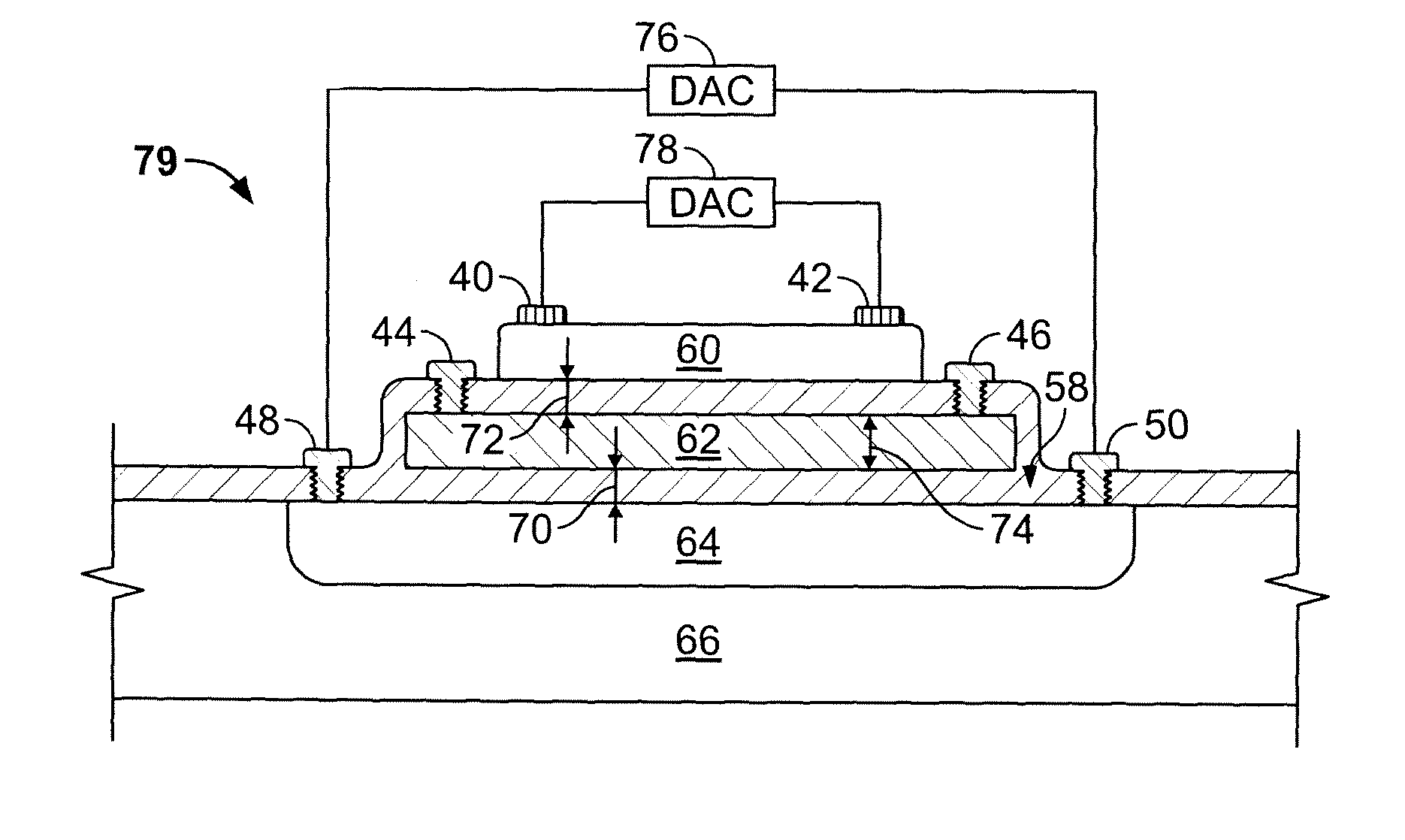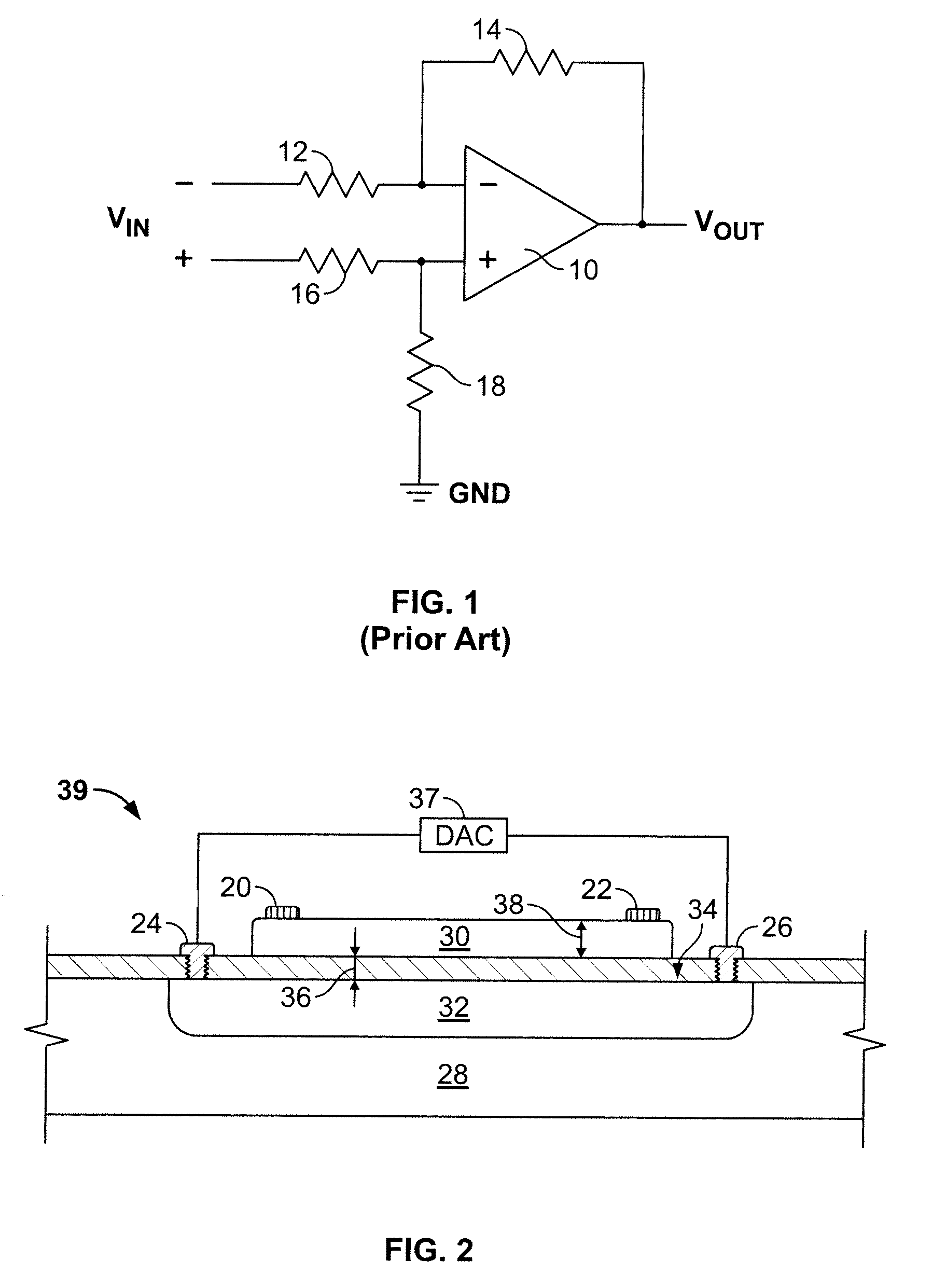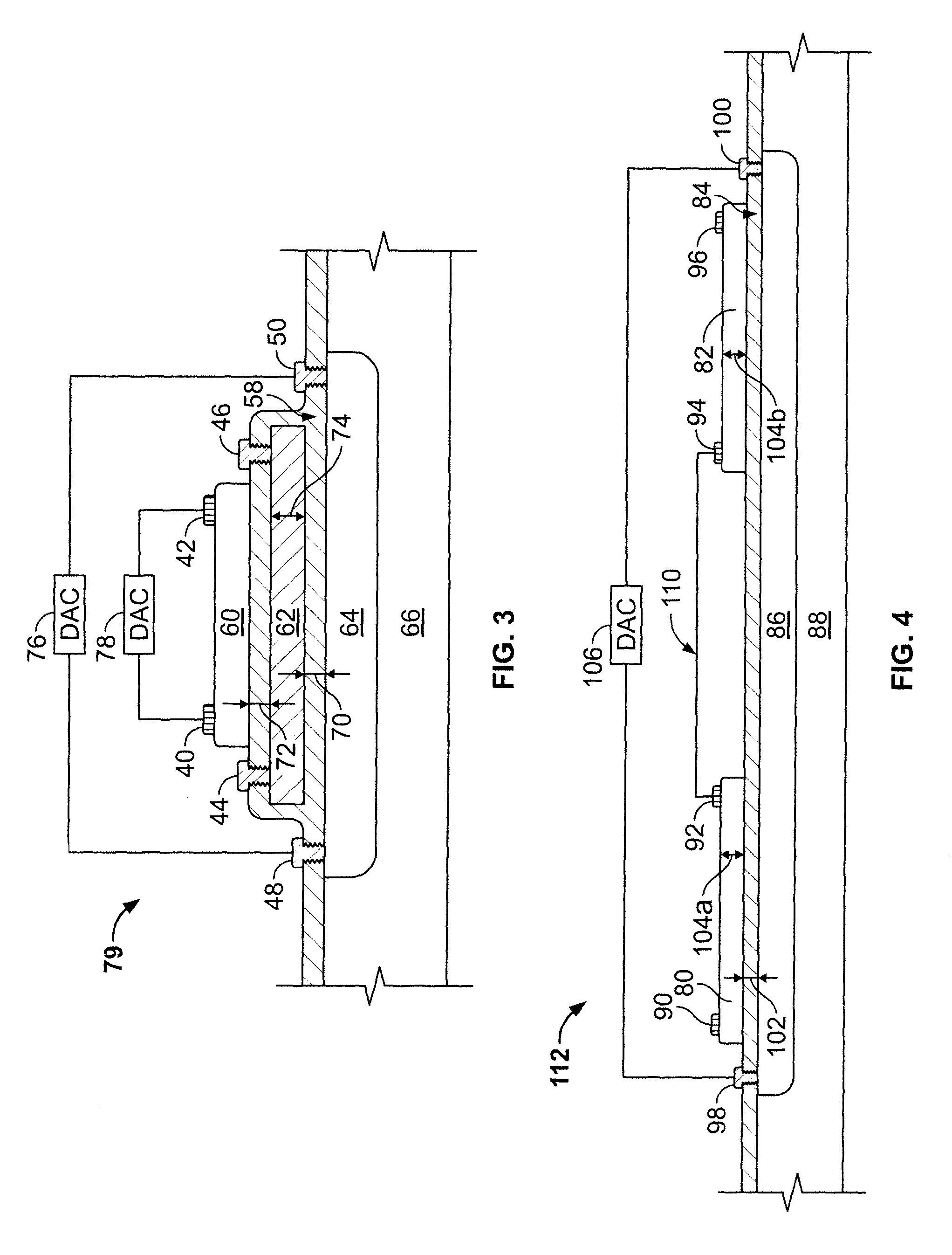Electrically adjustable resistor
a technology of resistors and resistors, applied in the field of adjustable resistors, can solve the problems of not allowing significant tuning of resistance, and achieve the effect of significant tuning of resistance and enhanced vcr of polysilicon resistors
- Summary
- Abstract
- Description
- Claims
- Application Information
AI Technical Summary
Benefits of technology
Problems solved by technology
Method used
Image
Examples
Embodiment Construction
[0027]The present invention satisfies the need for an improved and cost-effective way of adjusting resistance values in polysilicon resistors.
[0028]FIG. 2 provides a cross-sectional view of an electrically adjustable resistor in accordance with a preferred embodiment of the invention. The electrically adjustable resistor 39 comprises four regions: substrate 28, adjustment layer 32, polysilicon resistor layer 30, and dielectric 34. The substrate 28 forms the base on which additional materials and layers can be added. Substrate 28 can be made of either an n-substrate or a p-substrate. Ions are implanted into the substrate 28 to form the adjustment layer 32, which is an isolated p-well or n-well, depending on whether the substrate 28 is an n-substrate or a p-substrate. If an n-substrate is used, then the adjustment layer 32 will be an isolated p-well. If a p-substrate is used, then the adjustment layer 32 will be an isolated n-well. Dielectric layer 34 is formed atop adjustment layer 3...
PUM
| Property | Measurement | Unit |
|---|---|---|
| thickness | aaaaa | aaaaa |
| thickness | aaaaa | aaaaa |
| thickness | aaaaa | aaaaa |
Abstract
Description
Claims
Application Information
 Login to View More
Login to View More - R&D
- Intellectual Property
- Life Sciences
- Materials
- Tech Scout
- Unparalleled Data Quality
- Higher Quality Content
- 60% Fewer Hallucinations
Browse by: Latest US Patents, China's latest patents, Technical Efficacy Thesaurus, Application Domain, Technology Topic, Popular Technical Reports.
© 2025 PatSnap. All rights reserved.Legal|Privacy policy|Modern Slavery Act Transparency Statement|Sitemap|About US| Contact US: help@patsnap.com



